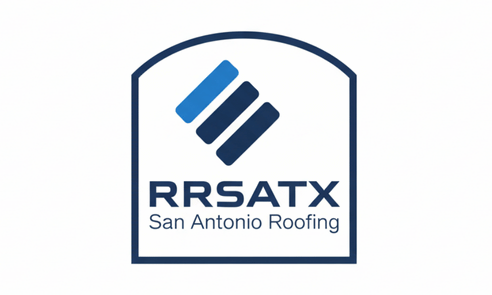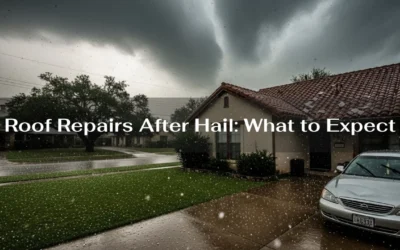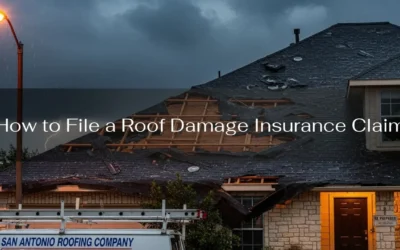In the sunny and vibrant city of San Antonio, metal roofs are a popular choice for residential and commercial buildings due to their durability, energy efficiency, and low maintenance requirements. However, despite their many advantages, metal roofs are not immune to damage. Over time, rust, corrosion, or physical damage can cause holes to form, leading to potential leaks and further damage.
If you’re a San Antonio resident facing a hole in your metal roof, don’t worry. This comprehensive guide will walk you through the process of repairing it, so you can maintain the integrity of your roofing system and protect your property from water damage.
Step 1: Assess the Damage
Begin by carefully examining the hole and the surrounding area to determine the extent of the damage. If the hole is relatively small (less than an inch in diameter) and isolated, you can likely repair it yourself. However, if you discover multiple holes or extensive corrosion, it’s best to call in a professional roofing contractor to assess and repair the damage.
Step 2: Gather Your Tools and Materials
To repair a hole in a metal roof, you will need the following tools and materials:
- Heavy-duty work gloves
- Safety glasses
- A wire brush
- Metal snips
- A drill with a screwdriver bit
- Roofing screws
- A tube of roofing sealant
- A caulking gun
- A patch of metal roofing material (preferably the same type and color as your existing roof)
Step 3: Prepare the Area
Put on your work gloves and safety glasses to protect your hands and eyes during the repair process. Use the wire brush to remove any rust, dirt, or debris from the area surrounding the hole. If necessary, you can also use a rust converter or rust remover to treat any corroded areas. Be sure to clean and dry the area thoroughly before moving on to the next step.
Step 4: Cut the Patch
Using your metal snips, cut a patch of metal roofing material that is at least 2 inches larger than the hole on all sides. This will ensure that the patch completely covers the hole and provides a secure, watertight seal. If the patch is not the same color as your existing roof, you can paint it to match before proceeding.
Step 5: Apply Sealant
Insert the tube of roofing sealant into the caulking gun, and apply a generous bead of sealant around the perimeter of the hole. Be sure to cover the entire area where the patch will be placed, as this will help create a watertight seal and prevent future leaks.
Step 6: Attach the Patch
Place the patch over the hole, aligning it with the sealant. Press down firmly to ensure a good bond between the patch, sealant, and existing roof. Secure the patch in place using roofing screws, spacing them evenly around the perimeter of the patch. Be sure to drill the screws into the raised seams of the metal roofing material to create a tight, leak-proof seal.
Step 7: Apply Additional Sealant
Once the patch is securely in place, apply another bead of sealant around the edges of the patch, covering the screw heads and seams. This will help to further waterproof the repair and ensure that it remains durable and long-lasting.
Step 8: Inspect and Maintain
After the sealant has cured (check the manufacturer’s instructions for the recommended curing time), inspect your repair to ensure that it is secure and watertight. Be sure to check your metal roof regularly for signs of damage or wear, and address any issues promptly to maintain the integrity of your roofing system.
A hole in a metal roof
can be a cause for concern, but with the right tools, materials, and a bit of know-how, San Antonio residents can effectively repair the damage themselves. By following the steps outlined in this guide, you can restore the integrity of your metal roof and protect your property from the elements.
However, it’s important to note that larger or more extensive damage may require the expertise of a professional roofing contractor. In such cases, don’t hesitate to reach out to a trusted local expert for assistance.
Regular inspection and maintenance of your metal roof will help you identify and address potential issues before they become more serious. By staying proactive, you can extend the life of your roof and continue to enjoy the benefits of a durable, energy-efficient metal roofing system.
So, whether you’re a DIY enthusiast or a homeowner looking to safeguard your property, this step-by-step guide on repairing a hole in a metal roof should provide you with the knowledge and confidence to tackle the task. Happy repairing, San Antonio residents!









